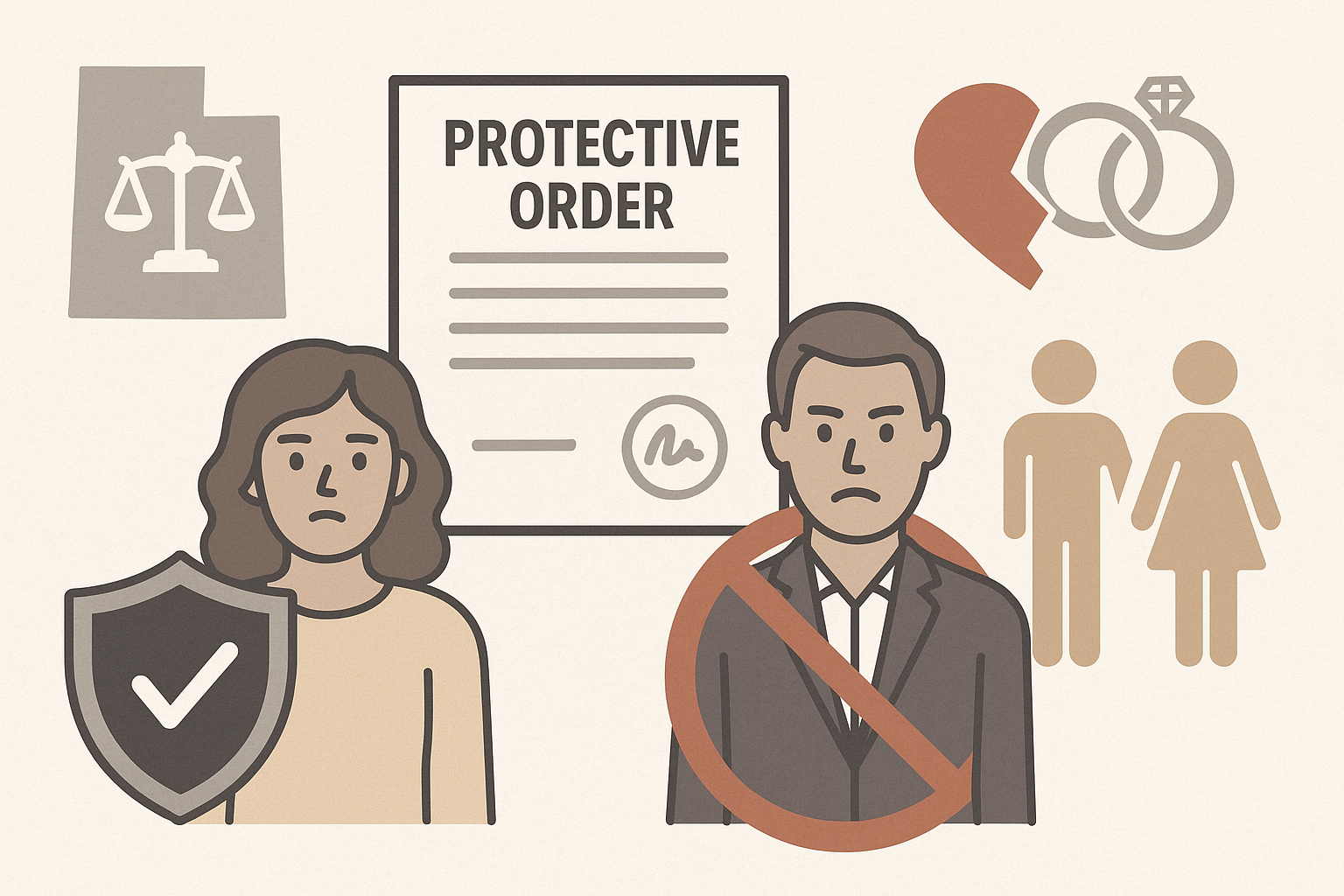Protective Orders in Utah How They Work During a Divorce
A Utah-focused guide to types, filing steps, proof, custody impacts, violations, safety tips, and next steps
Utah Law Explained gives you a clear Utah-first answer, then walks through steps, forms, timelines, and common mistakes so you can act with confidence.
If you are going through a divorce in Utah and are worried about safety, you might be considering a protective order. Bottom line up front: Utah courts take protective orders very seriously. These orders can provide real protection in cases of abuse, harassment, or threats, but they also come with strict rules and serious consequences if misused.
Protective orders play a unique role in divorce cases because they can affect housing, custody, and communication between spouses. Understanding how they work and how to request or respond to one can make the difference between feeling lost and being prepared.
Case Study: Sarah in Salt Lake County
Imagine “Sarah,” a mother in Salt Lake County, who files for divorce after her spouse makes repeated threats. She worries about her safety and her children’s well-being. Her attorney recommends filing for a protective order. Sarah’s experience shows how the process works in real life, and the lessons apply to anyone in Utah facing a similar challenge.
Temporary (Ex Parte)
Sarah files her petition, and the judge grants a temporary protective order the same day. This stops contact and can grant temporary custody until a hearing, often in about 20 days.
Hearing & Evidence
Both sides testify. Police reports, messages, and credible testimony help. Judges often rely on testimony, so clarity and documentation matter.
Long-Term Orders
If granted, a long-term order can last up to three years in Utah, and longer if needed. It sets clear boundaries and carries criminal penalties if violated.
Custody Overlap
Protective orders often intersect with custody. Courts weigh the child’s best interests and may order supervised time or limited contact for safety.
How to File in Utah
Sarah’s steps mirror the general process for anyone in Utah. Follow these in order so your request is reviewed quickly and correctly.
Tip: Bring printed copies of your petition, any police reports, screenshots, call logs, and a timeline of incidents. Simple, organized evidence helps the judge follow your story.
Standards of Proof, Violations, and Penalties
Standard of Proof
Violations
Custody Impacts
Practical Safety Tips
Step-by-Step: Filing to Final Order
Prepare & Gather Proof
Complete Utah’s forms, collect texts, call logs, police reports, and write a clear incident timeline.
File in District Court
File where either party lives. A judge may issue a same-day temporary order that bans contact and can set temporary custody.
Serve & Prepare
Ensure the respondent is served. Organize exhibits for the hearing and practice concise testimony.
Attend the Hearing
Explain what happened, when, and how it affects safety. Answer the judge’s questions directly and calmly.
After the Ruling
If a long-term order is granted, keep certified copies, follow all terms, and report any violations immediately.
Need Help Applying This to Your Situation?
Every family is different, and facts matter. A short consult with a Utah family law attorney can help you present the strongest case and avoid mistakes.
Talk to a Utah AttorneyVideo & Social Learning Hub
YouTube Resources
Key Takeaways
Temporary orders can be issued the same day and last until the hearing, often about 20 days.
Long-term orders can last up to three years in Utah and carry criminal penalties if violated.
Evidence and credible testimony drive outcomes. Courts prioritize child safety when custody overlaps.
This page is legal information, not legal advice. When in doubt, get counsel before you file.
Next Steps
Protective orders can be life-changing during a divorce, but they require careful handling. If you are unsure how to proceed, get tailored guidance.
Book a Protective-Order ConsultWe can help you understand forms, service, hearing prep, custody overlap, and how to enforce violations.
